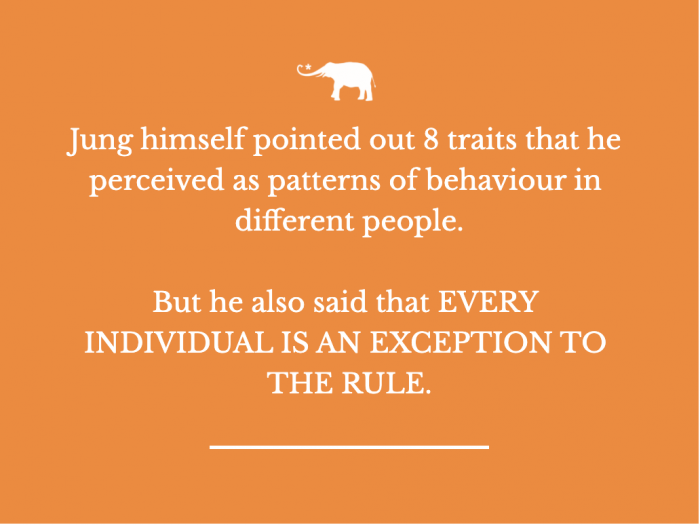For all those who get all worked up on the personality quiz and who are reassured by the fact that they are a type A, B or C of some grid that has been made to simplify a recruitment process, remember that it’s exactly that, to simplify.
Personality is on a spectrum.
We all have traits of it all. You are the narcissist, the empath, the introvert, the extrovert the thinker and the feeler. We have tendencies of hyper vigilance depending on the time in our life and the environmental context. We are not mechanical, we are organic creatures. We adapt, that is how we survive. This is why you will score one thing on a personality test when you are 20 and have a totally different outcome when you are 35.
If you would sit down in front of an Ayurvedic doctor, they would ask you to reply to the questions of your constitution depending on what you are experiencing NOW as opposed to what might USUALLY be or what it was like before. Because Ayurveda is based on the fact that we change with our surroundings. Just like any other organism.
Actually, this strange idea of classifying our personalities goes hand in hand with the post modern view of the universe and our place in it. As if there was a different rule for humans. Wether it’s the physical body or the subtle parts of us, we are living in symbiosis with the rest. This means that we will be affected from day 1 by the environment and the people in it. Sure thing, it means that we start out with a certain way of being. But in order to survive we will modify. Also, the more we learn, the more fine-tuned we become in our understanding of the world and ourselves.
We begin with one perception, let’s call it a paradigm. And when that one is proven non-valid, we tear it down and start building again. A new world from within, a new perception. Like any other creature of symbiosis, we will change in behaviour depending on what we are interacting with. For sure, we can see patterns in this. Some people change more easily than others. Jung himself pointed out 8 traits that he perceived as patterns of behaviour in different people.
But he also said that EVERY INDIVIDUAL IS AN EXCEPTION TO THE RULE.
Jung sketched out patterns of behaviour but the multiplying of them into 16 personalities that people refer to today, were not made by him, nor by any other professional of the human mind. The type of tests we have become accustomed to, like the Myers-Briggs, are made to define someone’s preferences in the context of a work environment essentially. It then means that it needs to cut rather thick slices of these preferences without consideration for nuances of childhood experience. It is also completely dependent on what the person is experiencing in their life, RIGHT NOW. It is a behavioural evaluation of the person (ie: the Behaviourist approach of Psychology), not the mental structure. There is also an element of “wishful thinking” or “people pleaser” in the response to the tests that evaluate your personality. We can call this “social desirability bias” which means that we tend to answer what we value more than what we truly are.
But let’s go back to the initial idea that there are people who are more affected by the external situation, an objective view and there are others who depend on an internal and more subjective perspective as they deal with the world. Jung was not a behaviourist so his approach was more of understanding what is going on in someone’s mind as a way to explain why the behave the way they do.
HOWEVER, since this is based on Jung’s typology, let’s not leave out one of the most important things he said about our personalities (and this goes for the attachment styles as well): “the meeting of two personalities is like the contact of two chemical substances. If there is any reaction, both are transformed”.
This means that we evolve constantly.
And that relationships means change.
It means growth.
We might not feel as if we are growing when we are in a relationship, depending on how well oiled the mechanic of it is. But we are.












Read 0 comments and reply